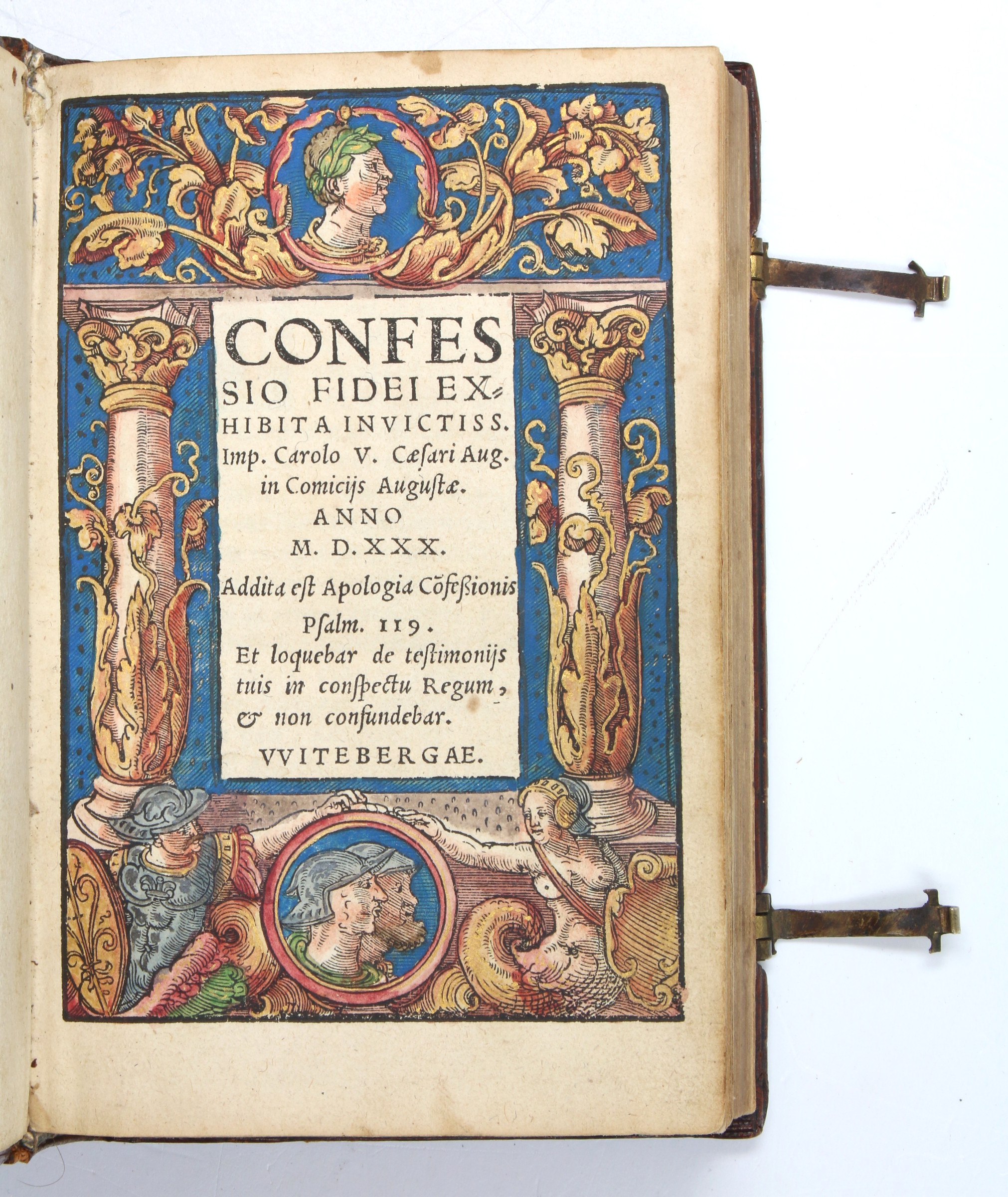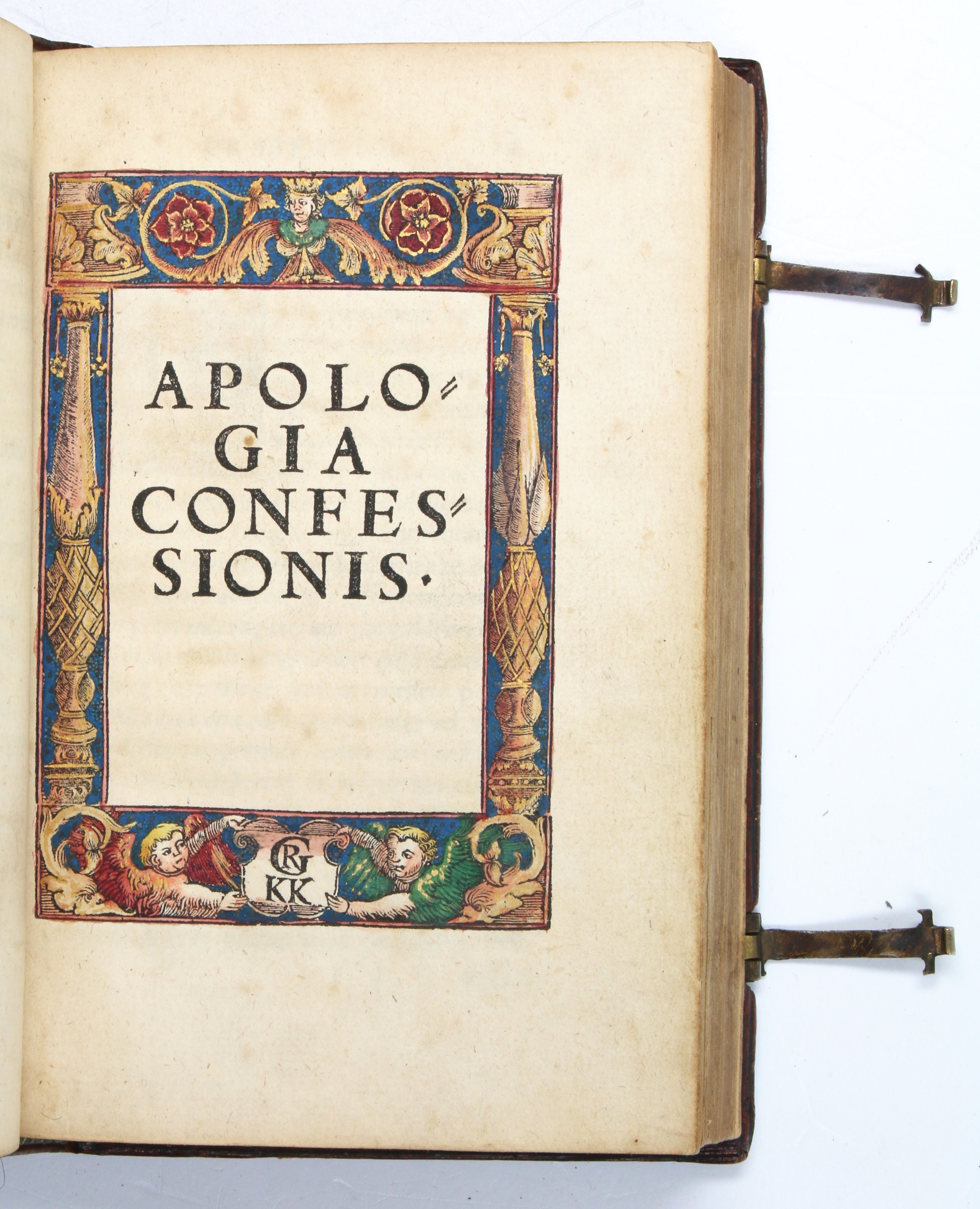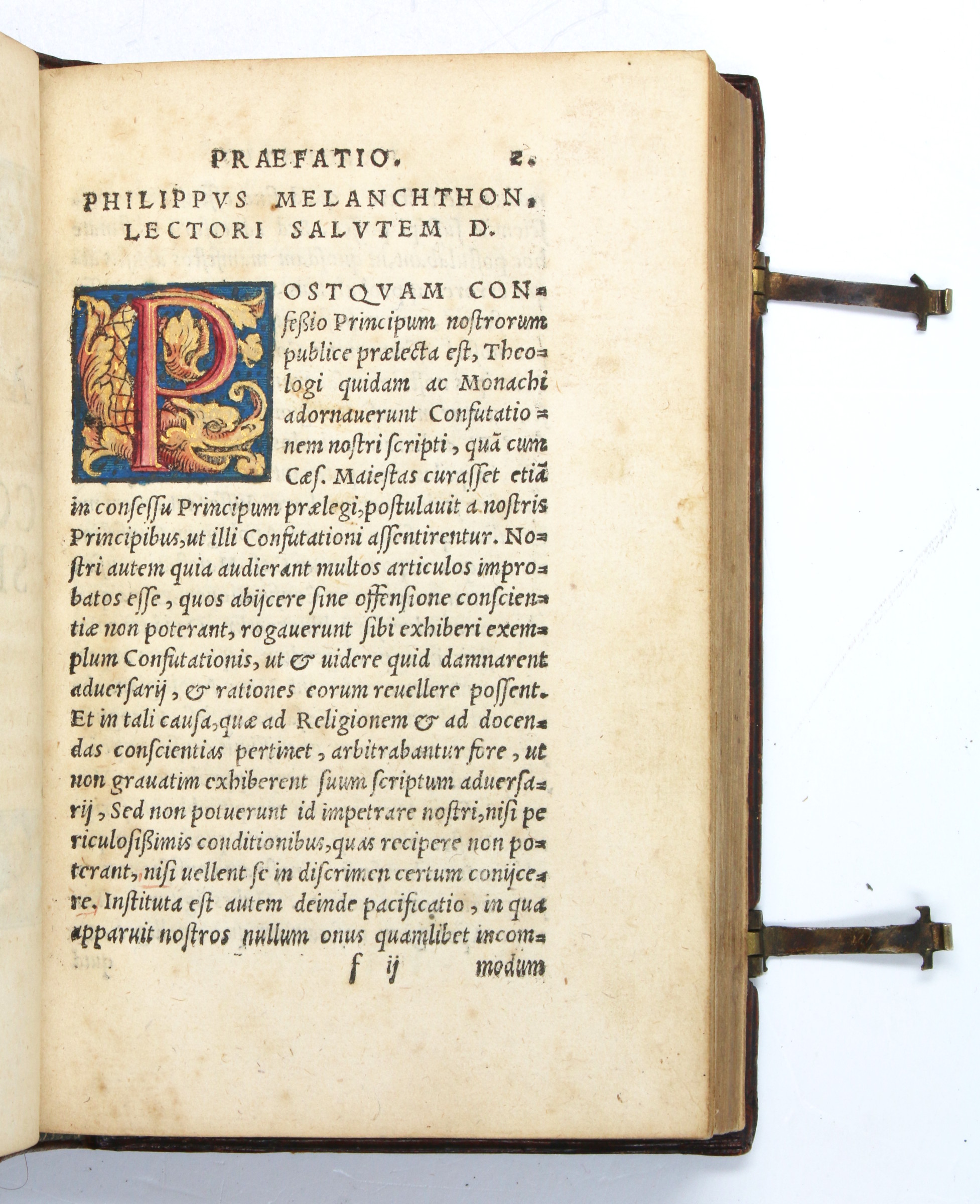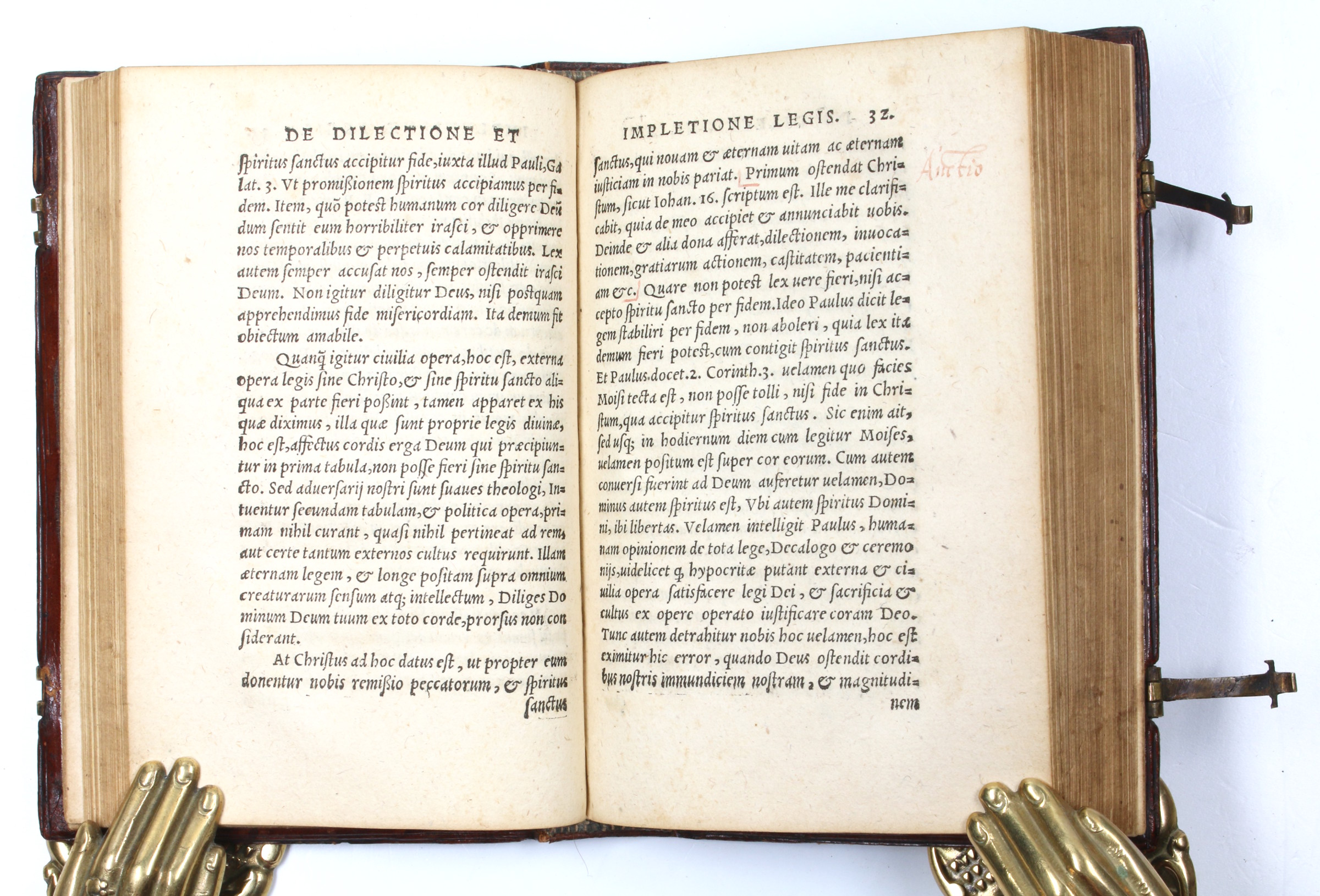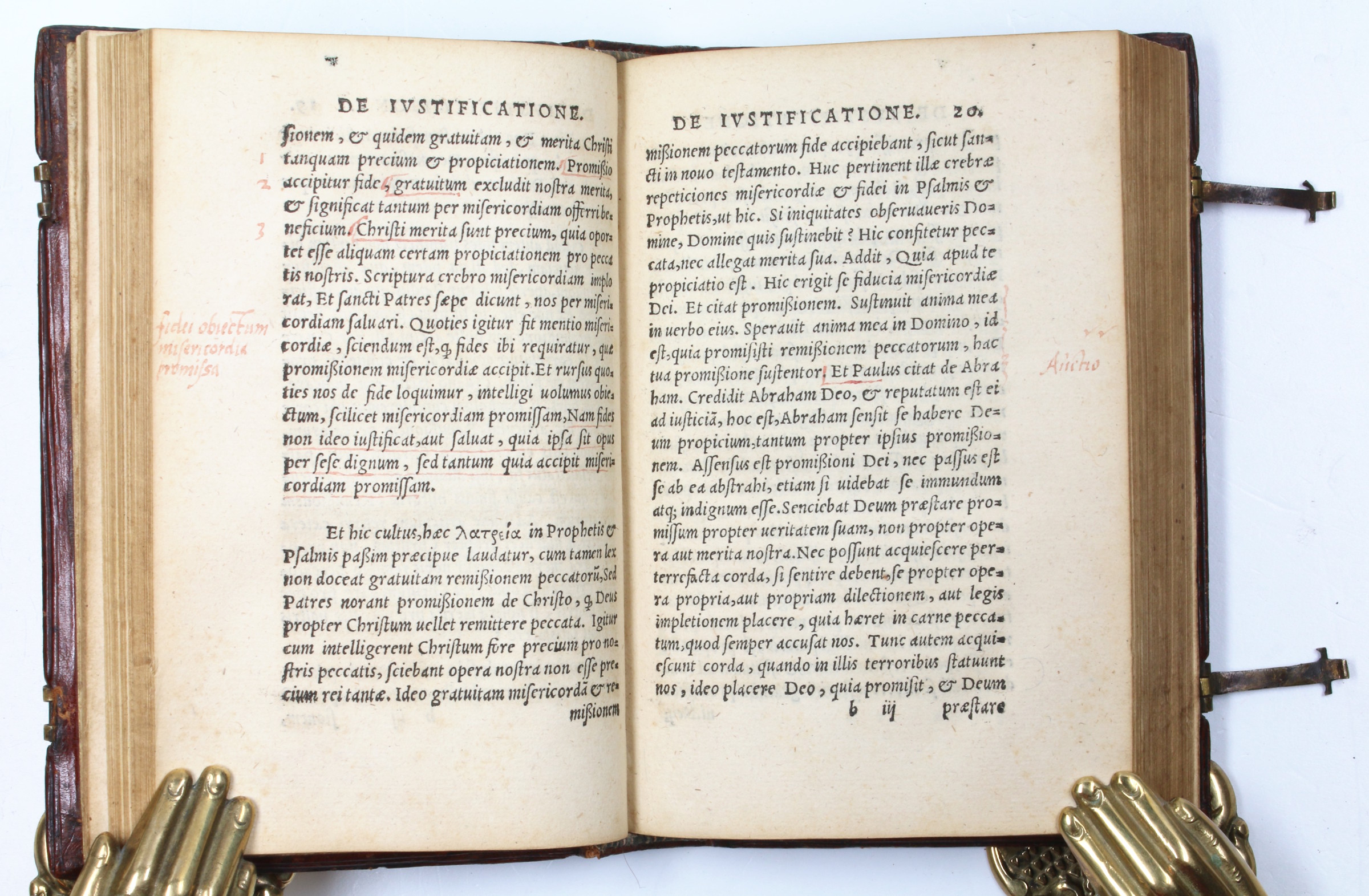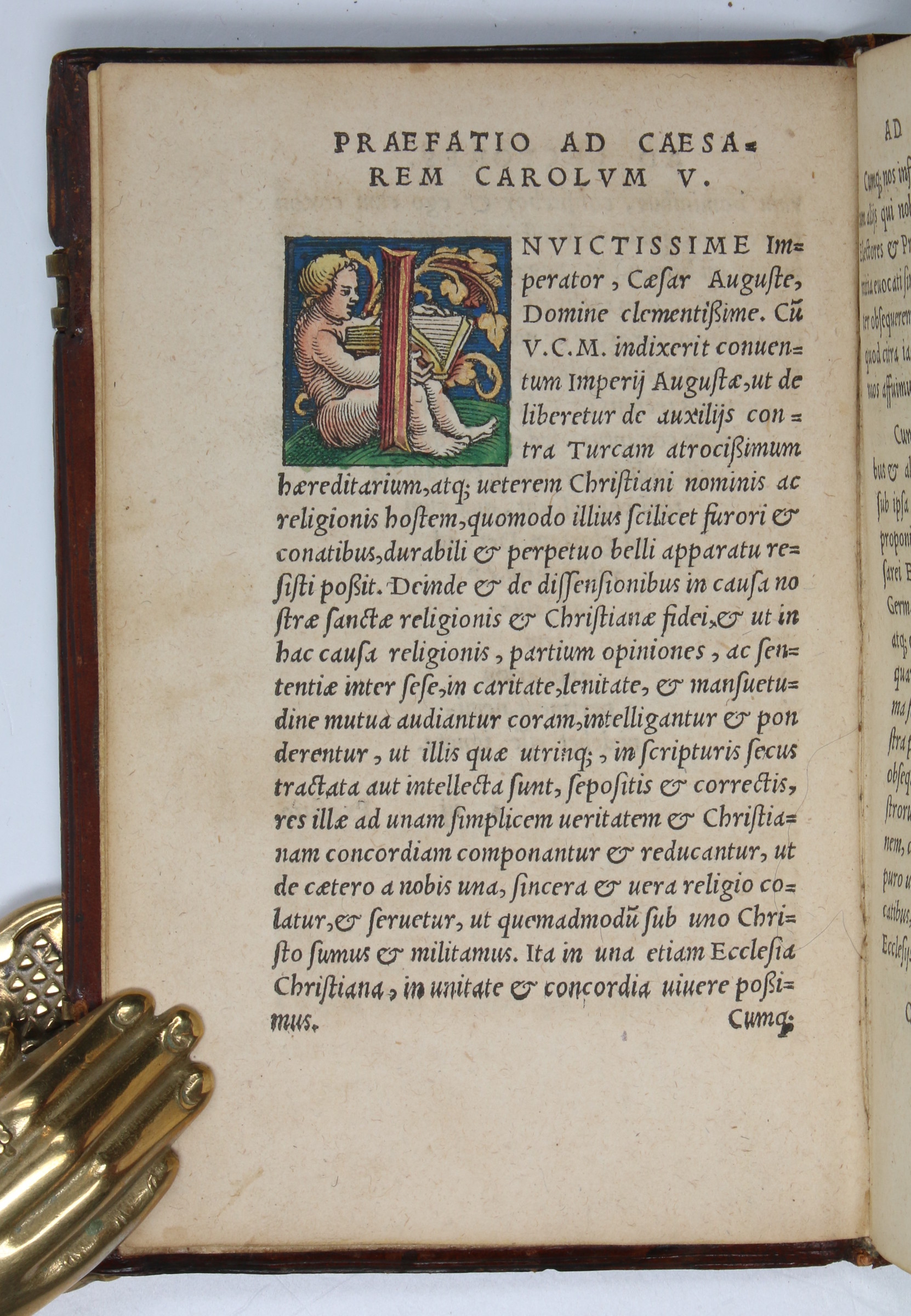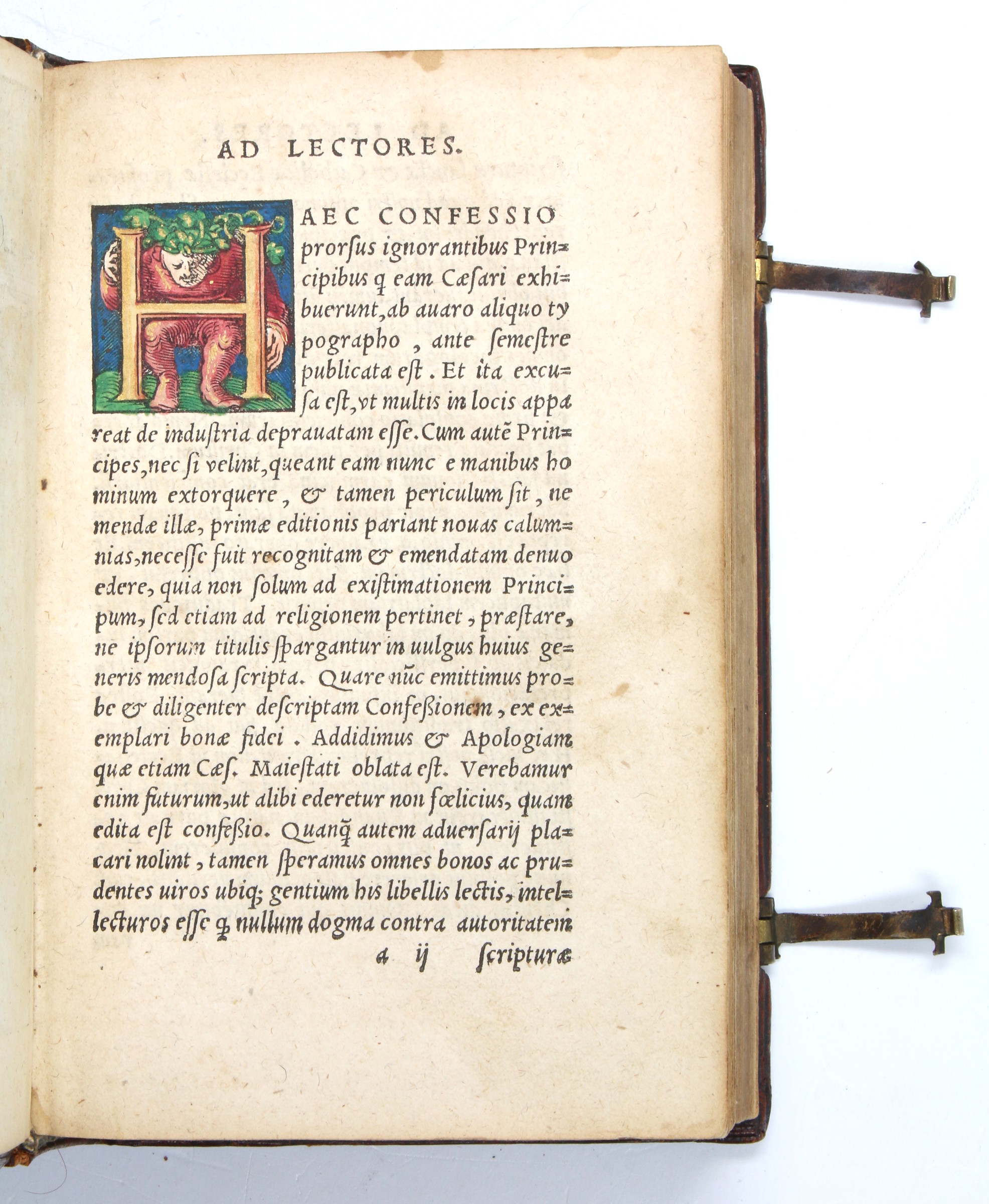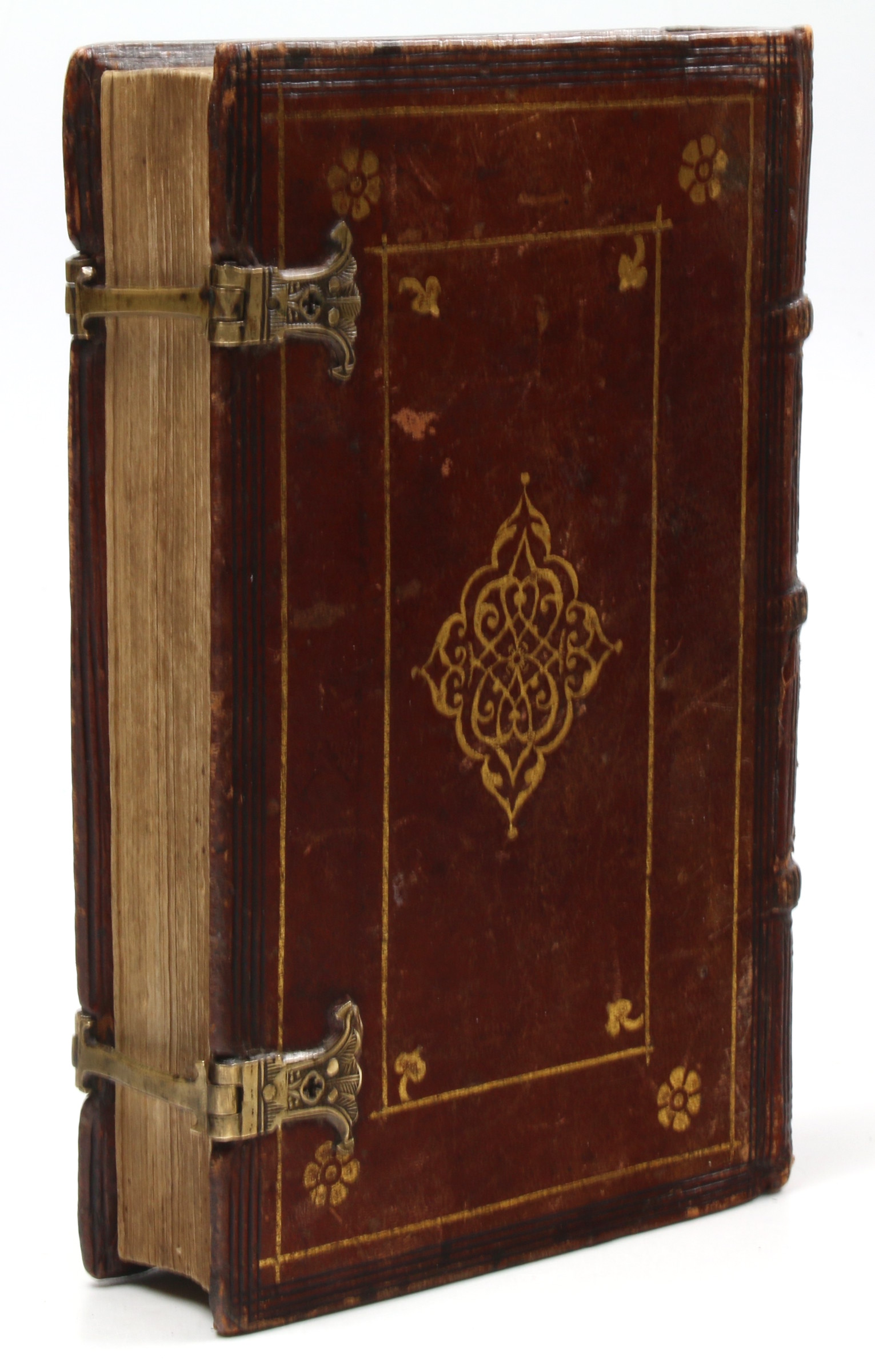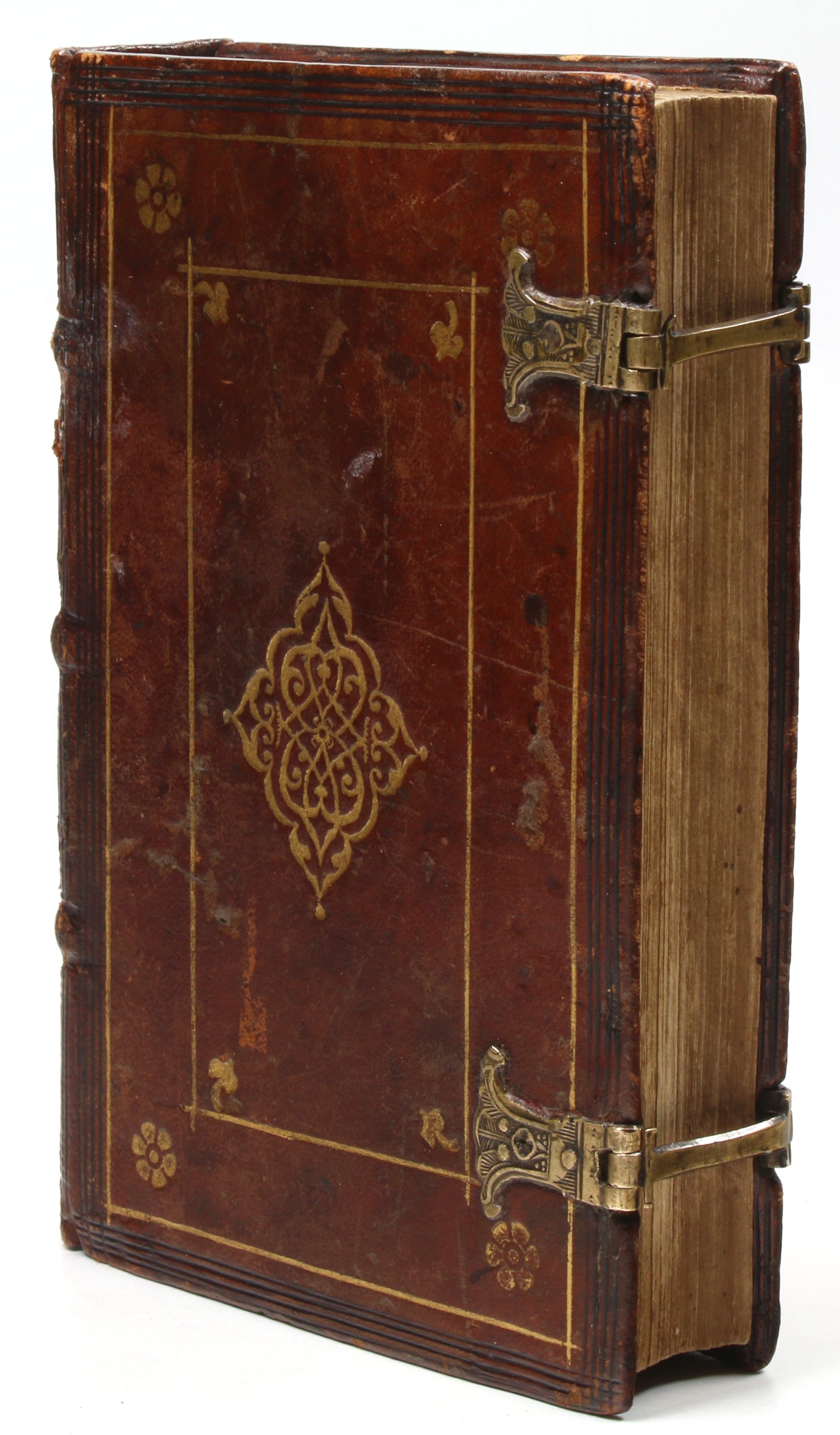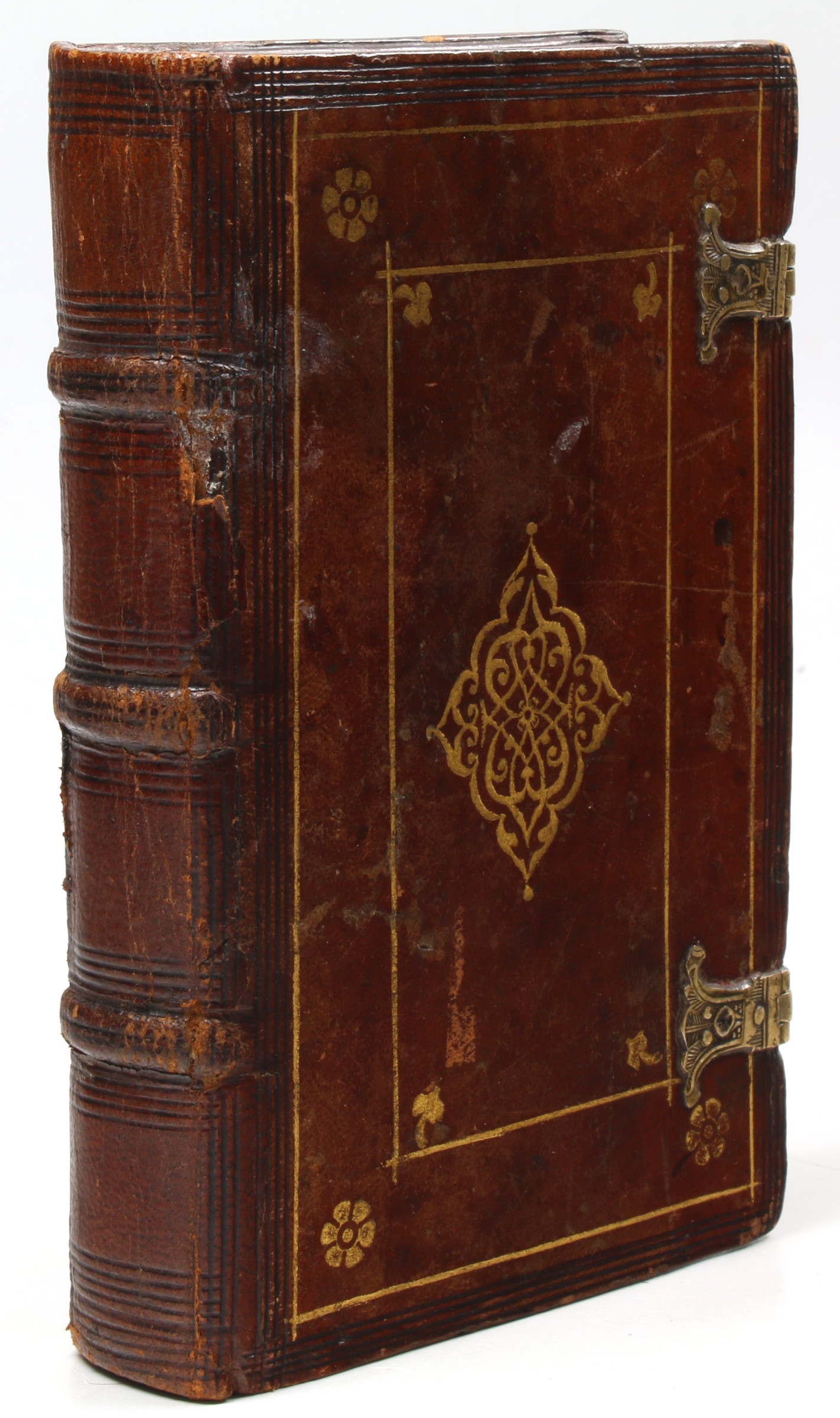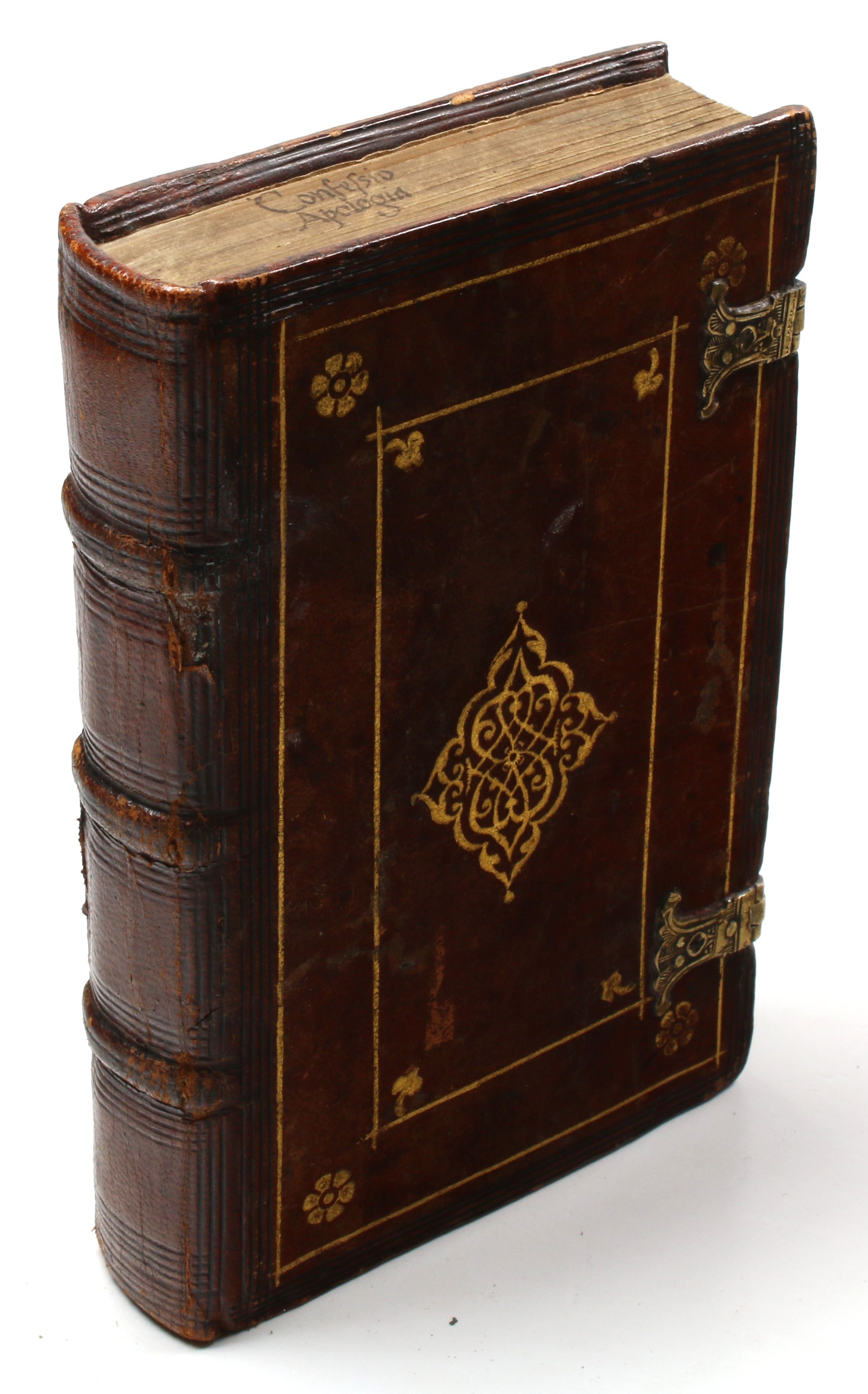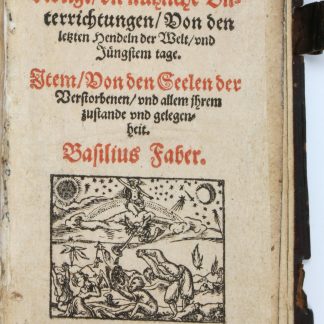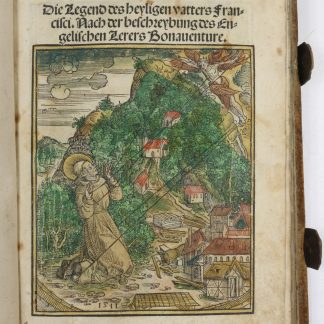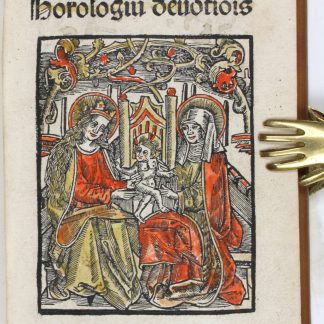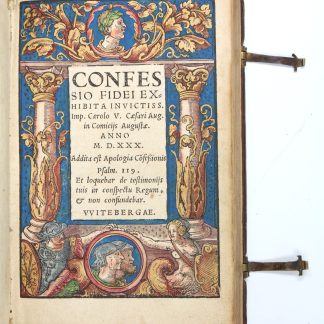The Augsburg Confession: an extraordinary, hand-coloured copy, owned by one of Luther's closest associates
Confessio fidei exhibita invictiss. Imp. Carolo V. Caesari Aug. in Comiciis Augustae. Anno 1530.
8vo (105 x 157 mm). (36), 64, (124) ff. With hand-coloured woodcut title-page border, hand-coloured woodcut border to Apologia section-title, and two woodcut initials, all beautifully coloured by a contemporary hand and heightened in gold. Contemporary full calf ruled in blind and tooled in gilt, with two functional brass clasps, title "Confessio Apologia" in early ink to top edge.
€ 45.000,00
The famous "Confessio Augustana", the creed of the reformed Church: one of the earliest editions, owned by Lazarus Spengler (1479-1534), close friend and ally of Martin Luther, lavishly coloured and with his beautiful woodcut bookplate long attributed to Albrecht Dürer.
The so-called Augsburg Confession was mainly drafted by Philipp Melanchthon with the aid of Martin Luther and Justus Jonas. It was presented to the Emperor Charles V at the Diet of Augsburg on 25 June 1530 and was one of the most influential documents to come out of the Reformation. The "Confessio" presents twenty-eight articles of faith, twenty-one of which describe the principles of the reformers, or Lutherans, and seven of which correct perceived abuses of the Roman Catholic church. Appended to the "Confessio" is Melanchthon's "Apologia Confessionis", written in response to the "Confutatio Augustana", which was prepared at the Emperor's direction by a group of Papal theologians led by Johann Eck.
This is the fourth authorized edition of the Lutheran confession of faith, containing the Latin text only (the first three, published the same year by Rhau, contained both Latin and German texts). These were preceded by several unauthorized editions in 1530.
This copy boasts an interesting provenance. Its first owner was Lazarus Spengler (1479-1534), head of the chancery of Nuremberg, whose armorial bookplate appears on the front pastedown and is as carefully hand-coloured as the plates in the work itself. A friend and promoter of Luther, Spengler was one of the representatives at the 1521 Diet of Worms, and was condemned along with Luther in the Bull of Excommunication (Decet Romanum Pontificem) issued by Pope Leo X. He wrote pamphlets on behalf of the Reformation and in defence of Luther and was a participant in the negotiations at the Diet of Augsburg, upholding strict Lutheranism. In his 1529 testament, Spengler bequeathed his library to Georg Hoppel (d. 1533), chancery secretary in Nuremberg, who in his own 1533 testament bequeathed the library to Paul Spengler. A handful of notes, underlinings, and corrections to the text, written in contemporary red ink and including one delicately drawn hand pointing to an important passage, may have come from any of these men, or even Spengler himself.
Lazarus Spengler's large woodcut bookplate displays his arms (a half lily and rose) and his motto ("Ultimus ad mortem post omnia fata recursus", from the "Alexandreis" by Walter of Châtillon) on a tablet below. Originally attributed to Spengler's good friend Albrecht Dürer, the woodcut has since been assigned to Sebald Beham, Erhard Schön, and most recently to Hans Springinklee (ca. 1495-after 1522), Dürer's closest assistant and a resident in his house.
1. Lazarus Spengler (1479-1534), leader of the Protestant Reformation in Nuremberg and hymnwriter. 2. Georg Hoppel, by bequest to 3. Paul Spengler. 4. Librairie Thomas-Scheler, Paris, 1995. 4. Thomas Kimball Brooker, oil industry executive (b. 1939).
Exceptionally well-preserved, with minor wear to covers, very rare spots of internal soiling, and bright and clean hand-painted title page, bookplate, and illuminated woodcut capitals.
VD 16, C 4709 & M 2505. Neuser 11. For Spengler’s bookplate, see: O’Dell, Deutsche und österreichische Exlibris 1500-1599 im Britischen Museum no. 391a; Beaujean, New Hollstein 76: Hans Springinklee, Part 2, no. 313 ("tentative attribution").

